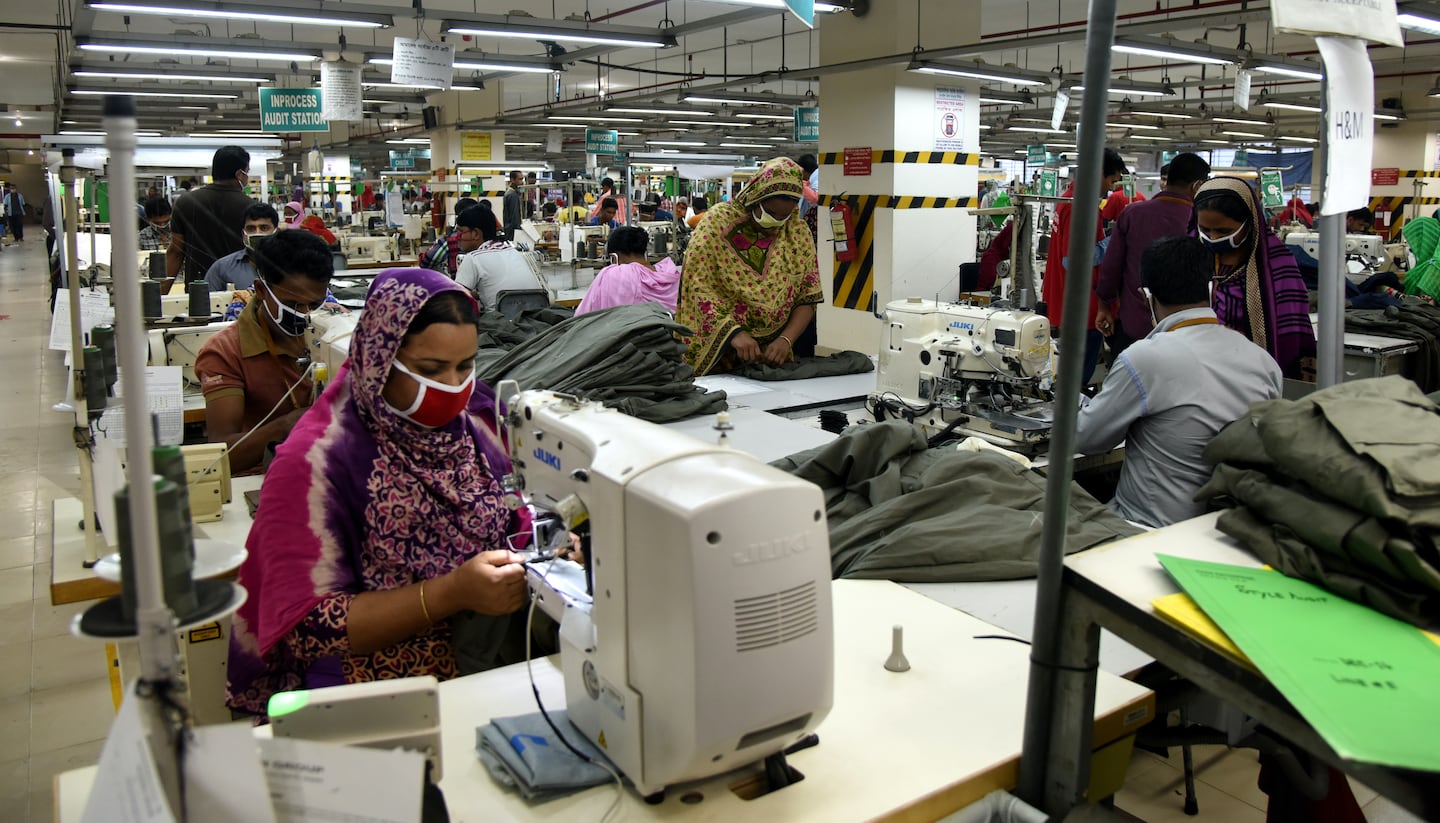
The Business of Fashion
Agenda-setting intelligence, analysis and advice for the global fashion community.

Agenda-setting intelligence, analysis and advice for the global fashion community.

A new investigation into wage theft among garment workers covering eight factories that supply 16 major international fashion brands has uncovered 9,843 workers who are fighting to have their wages and legally-owed benefits paid, according to the Business and Human Rights Resource Centre (BHRRC).
The factories in questions were located in Cambodia, Myanmar, the Philippines, Bangladesh and Ethiopia, and supplied brands including Carter’s, Hanes, H&M, Levi Strauss & Co., Lidl, L Brands, Matalan, Mark’s Work Wearhouse, Next, New Look, Nike, PVH, River Island, Sainsbury’s, s.Oliver and The Children’s Place.
Combined, the 16 fashion brands named in the report amassed $10 billion in profit in the second half of 2020. Of these brands, all except Carter’s, The Children’s Place and Matalan responded to the BHRRC investigation, with brands such as Nike, H&M and PVH denying having a current relationship with some of the suppliers named, and also outlining due diligence steps that have been undertaken in order to protect the welfare of workers in other factories they do currently work with.
Nevertheless, in all but one of the eight cases, at least a portion of wages, benefits and severance are still owed to workers months after they were due to be paid. According to BHRRC, this highlights a significant gap between company commitments to ensure full payment of wages and benefits and implementation in factories. Three cases remain unresolved, in five other cases, workers received a portion of what was owed, and in just one case workers have now received the full amount owed to them.
ADVERTISEMENT
The pandemic has made the already precarious situation for garment workers, most of whom are women in low-income countries, demonstrably worse. Research from the Worker Rights Consortium (WRC) shows garment workers’ average wages have decreased over the past 12 months by over a fifth (21 percent) from an average of $187 per month to $147.
This represents drift away from the stated goal many fashion companies have to ensure workers in their supply chains are paid a living wage. According to BHRRC research, the minimum wage in 12 major apparel exporting countries is, on average, over four times less than the amount workers need to live on.
“Payment of living wages as an industry standard would level the playing field for fashion brands and be transformative for workers – not only for a just recovery from the pandemic, but also to prevent the scale of crisis from repeating again,” Thulsi Narayanasamy, senior labour rights lead at BHRRC, said.
This week’s round-up of global markets fashion business news also features the China Duty Free Group, Uniqlo’s Japanese owner and a pan-African e-commerce platform in Côte d’Ivoire.
Affluent members of the Indian diaspora are underserved by fashion retailers, but dedicated e-commerce sites are not a silver bullet for Indian designers aiming to reach them.
This week’s round-up of global markets fashion business news also features Brazil’s JHSF, the Abu Dhabi Investment Authority and the impact of Taiwan’s earthquake on textile supply chains.
This week’s round-up of global markets fashion business news also features Dubai’s Majid Al Futtaim, a Polish fashion giant‘s Russia controversy and the bombing of a Malaysian retailer over blasphemous socks.